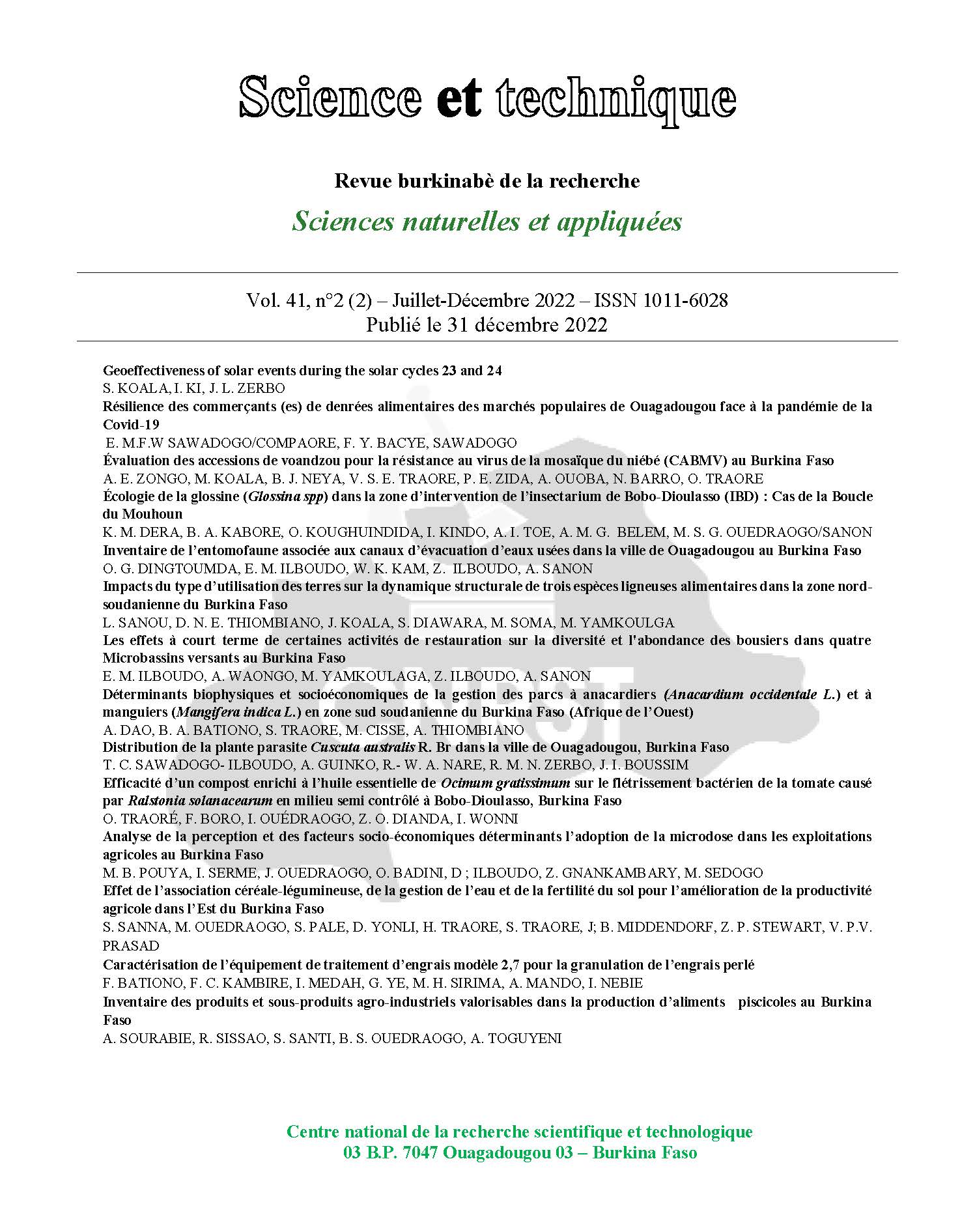Ecology of the tsetse fly (Glossina spp) in the intervention zone of the Bobo-Dioulasso insectarium (IBD): Case of the Region of the Boucle du Mouhoun
Keywords:
IBD, Tsetse fly, Ecology, floristic inventory, plantsAbstract
Burkina Faso's economy is strongly based on the rural sector. Agriculture and livestock occupy about
80% of the active population and contribute greatly to the national economy through export earnings.
Practised mainly in rural areas, these two sub-sectors face constraints that negatively impact their
development. Among these constraints are tsetse flies, which are the vectors for the transmission of
African Animal Trypanosomiasis (AAT) and African Human Trypanosomiasis (HAT). Responsible of
numerous direct and indirect losses, the fight against animal trypanosomosis is carried out in an integrated
framework with vector control. Within the framework of this vector control, a knowledge of their niche is
imperative. The objective of this study was to determine the apparent density of tsetse flies, to make an
inventory of the vegetation in the area and to identify the links between the presence of tsetse flies and the
characteristics of the vegetation. An entomological survey followed by an inventory was therefore carried
out on 25 plots along the Mouhoun River. The results revealed an apparent density of 1.43 tsetse/trap/day.
Only the species Glossina palpalis gambiensis was captured. The floristic inventory identified 466
individuals divided into 29 species, 16 families and 27 genera. The most diverse species were Diospyros
mespiliformis Hochst and Pterocarpus santalinoides. No significant correlation was found between the
different parameters and the presence of tsetse, thus confirming the necessity of a set of conditions such
as the presence of a feeding host and climatic conditions for the establishment of tsetse in a biotope.

